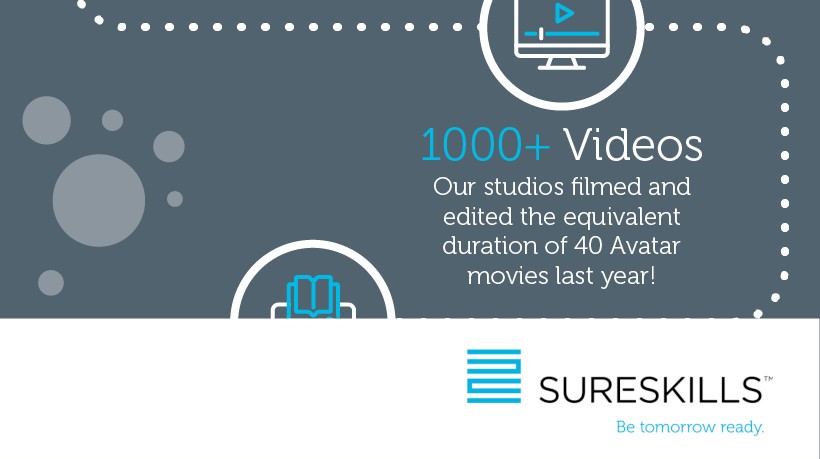
In 1990, the internet was just a gleam in the eye of Tim Berners-Lee. Today, more than 40% of the world is online, many of whom access the internet using a tiny pocket computer that would have been unthinkable in the early 90’s.
Evolving technologies have also ramped up the speed at which things happen in the business world. David Leaser of IBM points out that launch cycles are now measured in weeks and days instead of months and years.
For that reason, learners have a responsibility to constantly evolve, particularly when the half-life of a professional skill is shrinking all the time. There is no question that technology is changing the way we go about our jobs.
However, technology both poses a challenge and presents an opportunity. Rather than succumb to exasperation, employers can leverage trends in learning behaviour to empower employees by putting them in control of their own learning. Personalized, role-based training is an approach that caters to the needs of the modern learner with the flexibility necessary in today’s working world.
How technology affects modern learning habits
Josh Bersin’s now famous infographic emphasizes the impact of technology on the modern learner. Access to technology in the workplace (including smartphones!) has cultivated new habits.
In fact, the modern learner is more distracted than ever, unlocking their smart phones an average of nine times every hour and facing a barrage of distractions from various applications and collaboration tools. Consequently, our attention spans have significantly decreased, and learners today won't watch videos of longer than 2-4 minutes, maybe even shorter.
Compounding the challenge of distractions is the fact that learners have less than 1% of their workweek to focus on training and development. How are learners supposed to get the training they need to keep pace when they have less than 20 minutes in an entire workweek to better themselves and learn the (often evolving) skills necessary to be successful?
The 21st Century Working Environment
In addition to the sheer lack of time and attention available for training, the way people work has changed in recent years. Here’s how:
- Increasingly mobile: Today’s employees no longer punch a clock at a large corporate office and stay at their desks from nine to five. In fact, nearly one third of full-time employees do their work somewhere other than their employees location. Employees structure their days in unconventional ways to accommodate their lifestyles, which often means working from several different locations.
- Socially collaborative: Much of today’s workplace learning happens between peers during daily interactions with teammates and managers. Because of social media, we have become used to sharing what we know and using online tools to develop robust networks and research relevant industry trends and information.
- Accustomed to information on demand: Because many of us walk around with supercomputers (smartphones!) in our pockets, we have become accustomed to accessing information at the touch of a button (or the swipe of a finger). For that reason, employees demand the same access to point-of-need information in the workplace.
A personalized solution
Personalized learning meets the modern learner where they are by providing solutions to these individual and environmental challenges. Personalized learning paths available on mobile devices allows learners to access valuable training when it suits them, shaping their learning and development around their busy schedule in any location.
Because training is available on mobile devices, information is available on demand and helps to solve point-of-need queries that make learning more practical and applicable on the job. And finally, personalized learning empowers learners to take control of their own learning by identifying skills gaps and planning their evolution within the role to keep up with the pace of change in the business world.
At SureSkills, we use personalized learning as part of a competency-based approach to learning that helps organizations unlock the full potential of their internal teams. If you are interested in learning more, click below for more information!




